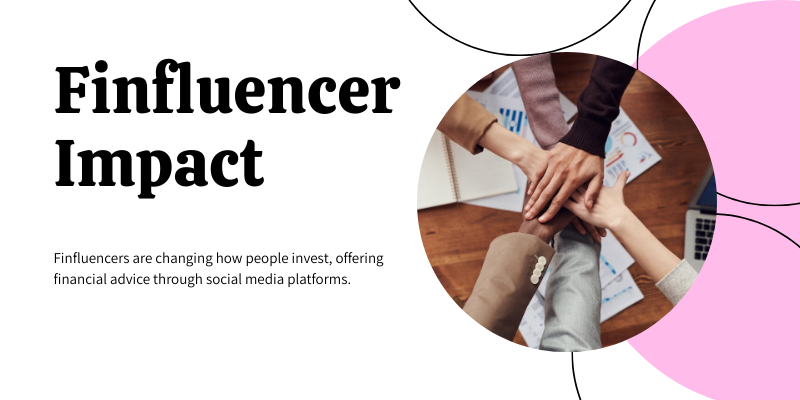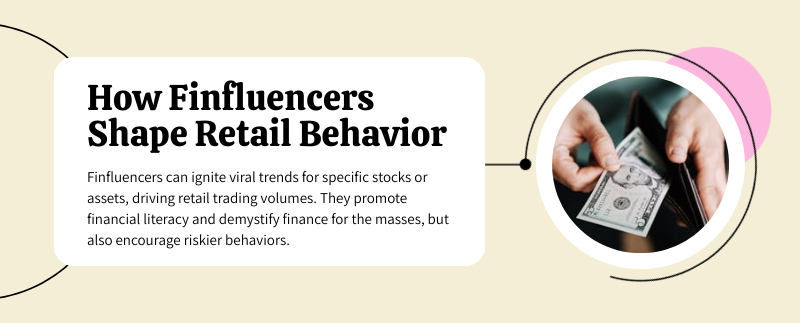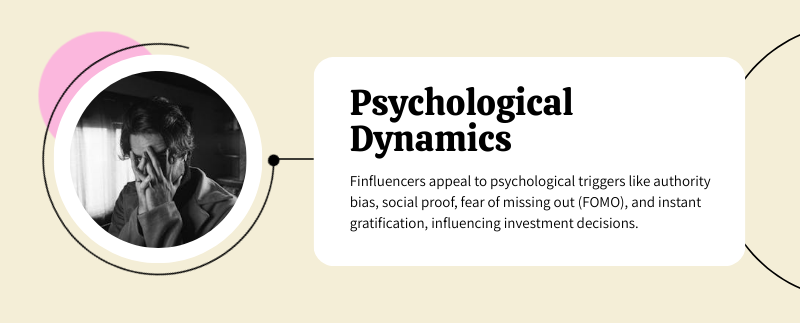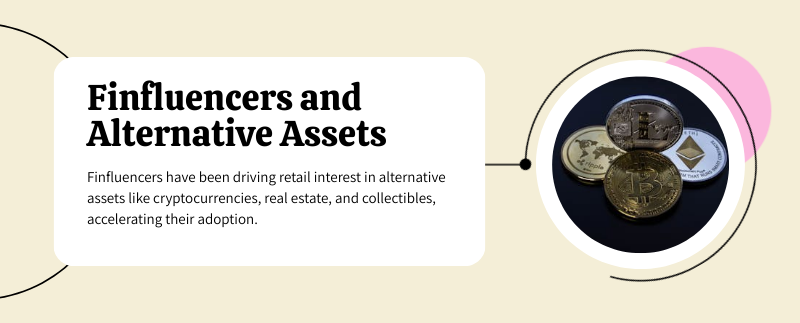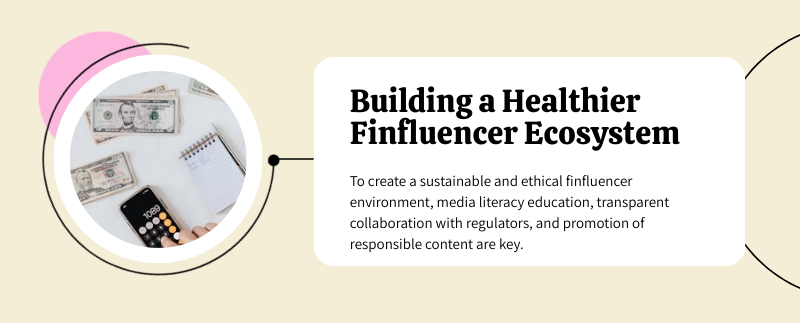In an age characterized by the convergence of widespread information access and influential social media platforms, the financial sector is experiencing significant transformation. Individual investors, previously dependent on conventional financial advisors or infrequent news updates, are increasingly engaging with financial influencers, known as “finfluencers,” who possess substantial digital followings.
This evolution is fundamentally altering the dissemination and reception of financial counsel, the establishment of credibility, and market responses. The influence of finfluencers on individual investing patterns is considerable, necessitating an examination of the opportunities, risks, and regulatory implications within this dynamic environment.
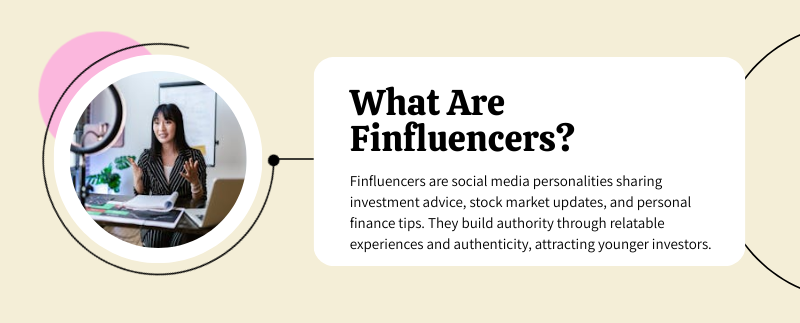
What Are Finfluencers?
Finfluencers, or financial influencers, are individuals who share investment advice, stock market updates, personal finance tips, and economic insights across social media platforms such as YouTube, TikTok, Instagram, X (formerly Twitter), and Reddit.
Unlike traditional financial advisors, many finfluencers are not formally licensed. They build authority through personal experience, relatability, and authenticity — qualities that resonate strongly with younger investors, particularly Millennials and Gen Z.
Some common characteristics of successful finfluencers include:
- Strong personal branding
- Consistent and transparent communication
- Content that blends entertainment with education
- Community-building initiatives like live Q&As and Discord groups
Their rapid rise has permanently altered how retail investors learn, strategize, and act.
What is Retail Investing?
The traditional model of retail investing emphasized long-term portfolio management via brokerages and certified financial planners. It was slow, measured, and generally restricted to those with higher capital.
Several factors have democratized investing:
- Zero-commission trading (e.g., Robinhood)
- Fractional shares allowing ownership with as little as $1
- Rise of ETFs and thematic investing
- Proliferation of financial information through blogs, forums, and social media
Today, investing is accessible, gamified, and increasingly social. Finfluencers sit at the epicenter of this cultural shift, guiding millions on how to participate in the markets.
How Finfluencers Shape Retail Behavior
The influence finfluencers wield over retail investing manifests in several significant ways:
Amplifying Stock and Asset Trends
Finfluencers can ignite viral momentum for specific stocks, cryptocurrencies, or asset classes. A single post can drive retail trading volumes to unprecedented levels, as witnessed during the GameStop and AMC short squeezes.
These movements often stem from:
- Viral TikToks recommending “undervalued” stocks
- Reddit threads hyping “meme stocks”
- YouTube videos predicting “next big thing” cryptocurrencies
This phenomenon has blurred the lines between investing and collective social action.
Promoting Financial Literacy
While some critics argue finfluencers oversimplify complex topics, many contribute significantly to raising baseline financial literacy. They offer free, digestible insights on:
- Budgeting and saving strategies
- Basics of stock market investing
- Retirement planning (e.g., 401(k) and IRA education)
- Risk management and diversification
In an industry notorious for jargon and exclusivity, finfluencers demystify finance for millions.
Encouraging Riskier Behavior
However, not all consequences are positive. Finfluencers often glamorize:
- High-risk, high-reward investing strategies
- Options trading with little risk disclosure
- Cryptocurrency speculation
- “YOLO” investing on volatile penny stocks
This tendency, especially when paired with inexperienced audiences, can lead to herd mentality, significant losses, and financial instability.
Building Parasocial Relationships
Audiences often feel a deep connection to their favorite finfluencers, leading to an amplified trust in their advice. This parasocial bond can overshadow critical thinking, resulting in blind adherence to speculative calls.
Shaping New Investment Philosophies
Finfluencers have cultivated unique investment ideologies such as:
- FIRE (Financial Independence, Retire Early) movements
- YOLO investing in high-risk assets
- Thematic investing in trends like clean energy, space exploration, and blockchain
These ideas are reshaping the future landscape of personal finance and investing.
Platforms Fueling the Finfluencer Economy
Each platform offers a different flavor of finfluencer content:
| Platform | Style of Content | Notable Finfluencers |
| YouTube | Long-form explainers, deep dives | Andrei Jikh, Graham Stephan |
| TikTok | Quick tips, investing challenges | Humphrey Yang, Tori Dunlap |
| Infographics, short reels | Delyanne Barros, Personal Finance Club | |
| X (Twitter) | Real-time analysis, threads | Genevieve Roch-Decter, Ramp Capital |
| Crowdsourced stock picks, deep due diligence | r/WallStreetBets, r/PersonalFinance |
The versatility across platforms ensures finfluencers reach different demographics with varying degrees of engagement and sophistication.
The Rise of New Retail Investor Profiles
The typical retail investor profile has diversified, thanks largely to the influence of finfluencers:
- Younger Age Groups: Millennials and Gen Z dominate the new investor base.
- First-time Investors: Many have started investing without traditional gatekeepers.
- Thematic Focus: Investments align with personal values, e.g., ESG stocks.
- Higher Risk Appetite: Greater tolerance for volatility, especially in crypto.
This new investor class values transparency, speed, and accessibility over traditional notions of stability and prestige.
Finfluencers as Catalysts for Financial Inclusion
One of the most notable, yet underappreciated, impacts of finfluencers is their role in promoting financial inclusion. Historically, investing was perceived as an elite pursuit — inaccessible without significant capital, formal education, or insider connections. Finfluencers have helped tear down these barriers, opening the doors of the financial markets to broader, more diverse populations.
Through engaging storytelling and approachable content, finfluencers:
- Reach minority and underrepresented communities
- Normalize conversations about wealth-building and investing
- Provide financial education where traditional institutions have failed
- Highlight investment opportunities previously overlooked by mainstream media
For example, campaigns promoting the importance of first-time homeownership, emergency savings funds, or minority-owned ETFs are increasingly driven by finfluencer content. The diversity of voices in the finfluencer space ensures that more individuals see themselves reflected in the investing landscape, encouraging participation at all levels of income and education.
The Role of Micro-Finfluencers in Shaping Niche Markets
While many discussions center around finfluencers with millions of followers, the micro-finfluencer ecosystem (those with 10,000 to 100,000 followers) is just as powerful — if not more so — in shaping niche investment behaviors.
Micro-finfluencers typically:
- Enjoy higher engagement rates due to their relatability
- Build tight-knit communities focused on specialized investment themes
- Foster deep trust among their audiences
Examples of niche micro-finfluencer focus areas include:
| Niche Focus Area | Typical Audience | Example Topics |
| Real estate investing | First-time investors, millennials | How to house hack, invest in rental properties |
| Dividend investing | Retirees, passive income seekers | Top dividend stocks for 2025 |
| Sustainable investing (ESG) | Eco-conscious Gen Z and Millennials | How to invest in green energy ETFs |
| Crypto and DeFi | Tech-savvy, risk-tolerant investors | DeFi yield farming, altcoin reviews |
This “long-tail” of finfluencers enables hyper-targeted financial education and empowers investors to pursue strategies aligned with their unique goals and values.
Virality vs. Viability: Investment Fads and the Herd Mentality
The viral nature of social media creates a double-edged sword. On one hand, it can quickly disseminate valuable information about new financial opportunities. On the other, it can fuel speculative frenzies untethered from economic fundamentals.
Several phenomena illustrate this tension:
- Meme stocks experiencing price surges based purely on social sentiment
- Initial Coin Offerings (ICOs) skyrocketing in value before collapsing
- SPACs (Special Purpose Acquisition Companies) promoted as easy paths to early investment gains
In these instances, virality eclipses viability. Retail investors, caught up in the excitement, often buy assets at inflated valuations without fully understanding the underlying risk profiles. When the inevitable market correction occurs, those late to the trend are disproportionately harmed.
Finfluencers, knowingly or not, often become amplifiers of this cycle. Their responsibility to temper enthusiasm with education is more critical than ever in such volatile environments.
The Psychological Dynamics Behind Finfluencer Appeal
Understanding why finfluencers wield such profound influence over retail investors requires examining the psychological levers at play:
1. Authority Bias
Finfluencers, especially those showcasing apparent success (luxury lifestyles, large portfolios), project an aura of expertise. Audiences tend to defer to these perceived authorities without independently verifying their credentials or track record.
2. Social Proof
When a video or post garners millions of views, comments, and likes, it signals legitimacy. Investors feel reassured that “everyone else is doing it,” a classic manifestation of herd behavior.
3. Fear of Missing Out (FOMO)
Scarcity and urgency tactics — such as “This stock is about to explode!” — tap into primal fears of being left behind, prompting impulsive investment decisions.
4. Instant Gratification
Short-form platforms like TikTok reward brevity and sensationalism over nuance. Investors conditioned to seek quick dopamine hits may prioritize “get rich quick” schemes over disciplined, long-term strategies.
Recognizing these psychological triggers is vital for investors striving to maintain rationality in a high-stimulus environment.
The Professionalization of Finfluencers: Moving Toward Legitimacy
As the finfluencer economy matures, a subset of influencers is professionalizing their operations. Indicators of this evolution include:
- Certification Programs: Some influencers pursue CFP (Certified Financial Planner) designations or Series 65 licenses to offer legally compliant financial advice.
- Disclosure Practices: Increased transparency around sponsored content, partnerships, and affiliate relationships.
- Educational Initiatives: Launching courses, webinars, and eBooks that provide structured financial education rather than casual tips.
- Collaborations with Financial Institutions: Partnerships with banks, brokerages, and fintech companies to co-create content, often under strict compliance oversight.
This professionalization trend helps bridge the gap between traditional finance and the new social media-driven investment ecosystem. It also strengthens trust among audiences seeking credible, actionable guidance.
Finfluencers and the Rise of Alternative Assets
Beyond traditional stocks and bonds, finfluencers have accelerated retail interest in alternative assets:
| Asset Class | Typical Finfluencer Focus | Risk Profile |
| Cryptocurrencies | Bitcoin, Ethereum, altcoins, NFTs | High volatility |
| Real Estate | REITs, crowdfunding platforms | Moderate to high |
| Private Equity | Access via crowdfunding portals | Illiquid, high risk |
| Collectibles | Sports cards, watches, rare art | Speculative |
| Precious Metals | Gold and silver investing strategies | Inflation hedge |
In many cases, finfluencers serve as early adopters and evangelists for new asset classes, driving rapid retail adoption before traditional financial media even acknowledges these trends.
However, the learning curve and risk profiles for alternative assets are steep. Poorly informed investors may overallocate to speculative assets, exposing themselves to significant downside during market corrections.
Regulatory Scrutiny Intensifies
As finfluencers’ impact grows, so too does the regulatory microscope. Key developments include:
- Advertising Standards Crackdowns: Regulators in jurisdictions like the UK are mandating explicit disclaimers for sponsored posts.
- Investor Protection Campaigns: Public education initiatives warning consumers about the risks of taking financial advice from unlicensed influencers.
- Proposed Licensing Requirements: Discussions around requiring social media financial content creators to obtain formal advisory licenses.
- Penalties for False Claims: Cases where finfluencers have been fined or banned for misleading investment advice, market manipulation, or failure to disclose conflicts of interest.
The future regulatory environment will likely require a careful balance: protecting retail investors without stifling the democratizing power of finfluencer-led education.
Building a Healthier Finfluencer Ecosystem
To create a sustainable, ethical finfluencer environment that supports long-term investor success, several initiatives are critical:
1. Media Literacy Education
Teaching audiences how to critically assess financial information — and distinguish between entertainment and genuine advice — is essential.
2. Transparent Collaboration with Regulators
Forward-thinking finfluencers should work proactively with regulators to set ethical standards, rather than resisting oversight.
3. Promotion of Long-Term Investing Principles
Finfluencers must champion diversification, disciplined strategies, and risk management over sensationalism and short-term speculation.
4. Disclosure Best Practices
Clear, conspicuous disclosure of affiliations, sponsorships, and investment holdings builds trust and credibility.
5. Community Empowerment
Encouraging audiences to share their own due diligence, ask tough questions, and think independently fosters healthier investing communities.
How Traditional Financial Institutions Are Responding
Traditional financial firms, initially skeptical of finfluencers, are adapting in several ways:
- Launching in-house finfluencers: Some banks and brokerages now employ social media-savvy advisors to create native content.
- Partnering with Established Creators: Firms collaborate with trusted finfluencers to promote products and educational initiatives.
- Investing in Digital Platforms: Enhancing mobile apps, content marketing, and gamified investing features to capture younger demographics.
- Content Sponsorships: Financial brands sponsor YouTube channels, podcasts, and TikTok series that align with their marketing goals.
This convergence signals a new era where traditional finance and social media culture coexist — and even thrive together.
Looking Ahead: Predictions for the Finfluencer Economy
Several trends will likely shape the next five to ten years of finfluencer-driven retail investing:
- Decentralized Finance (DeFi) will attract even more retail interest, led by influencers explaining blockchain innovations.
- AI and Machine Learning tools will empower finfluencers to offer real-time, personalized insights at scale.
- Hyper-niche Content will flourish, with influencers specializing in ever more specific investment strategies.
- International Expansion will see finfluencer culture explode beyond the US and UK into emerging markets like India, Africa, and Latin America.
- Greater Audience Sophistication will shift demand toward deeper, higher-quality analysis and away from quick, flashy tips.
Finfluencers who adapt to these trends while maintaining transparency, credibility, and educational value will be best positioned for enduring success.

